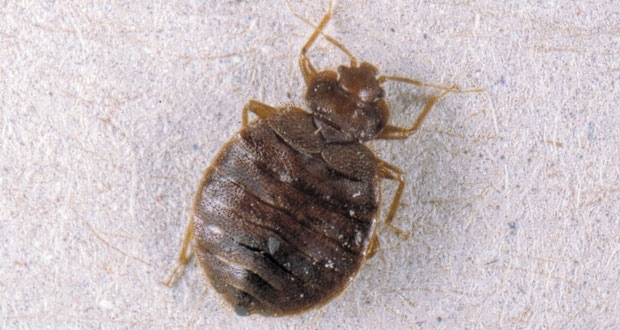Brian Duffin, Head of Technical at Rokill, a leading pest control service and part of the Nurture Group, sheds light on the urgency of addressing bed bug infestations, emphasising prevention strategies and effective eradication methods
The hospitality sector, with its commitment to providing comfort and a home -from-home experience, faces a silent yet formidable adversary in the form of bed bugs. These tiny nocturnal pests, feeding on the blood of unsuspecting guests, have evolved into a significant threat, jeopardising the reputation and financial stability of establishments within the hospitality industry.
The rising prevalence of bed bug infestations is emerging, not least fuelled by the 2023 Rugby World Cup in France. The inevitability of these unwanted hitchhikers returning with travellers to the UK poses a significant threat to the hospitality industry, especially through transport hubs such as airports, ports, and trains.
The Growing Threat
As we speak, Paris is grappling with a widespread bed bug infestation, with authorities cautioning residents and tourists that “no one is safe.” Disturbing footage on TikTok has heightened concerns, prompting some individuals to stand on fabric seats in the Parisian metro to avoid potential infestations. Deputy mayor Emmanuel Gregoire stressed the pervasive nature of the problem, stating that anyone could encounter bed bugs, emphasising the risk factors.
The issue has raised questions about the spread of bed bugs to London, a mere two-hour train journey away. Bedbugs could easily survive the journey, potentially increasing the numbers in London due to the Paris epidemic.
Eurostar, the high-speed train service connecting Paris and London, has reassured passengers that its trains undergo thorough cleaning, including hot-water injection and extraction cleaning, and it plans to implement additional “preventative treatments” to safeguard passengers from potential infestations.
As bed bugs continue to pose challenges for cities globally, the need for public awareness, preventive measures, and effective eradication strategies becomes increasingly apparent. There is a 65 per cent year-on-year increase in infestations across the UK, so the need for proper bedbug control measures has never been higher.
With the Rugby World Cup drawing crowds from around the globe, the risk of bed bug transmission to the UK is a real and immediate concern with a probable spike in southern regions, due to their status as transportation hubs, necessitates a targeted focus on the hospitality sector, where regular contact with soft furnishings is high.
INFESTATION: The Stealthy Invaders
Bed bug infestations often begin discreetly, with these resilient creatures finding their way into homes, hotels, and various public spaces. With a penchant for hitchhiking on luggage and clothing, bed bugs traverse geographical boundaries, exemplified by the situation in France. The consequences of infestation extend beyond mere discomfort, impacting physical health and psychological well-being.
Targeting any softly furnished surface, beds, chairs, sofas, cushions, rugs, and carpets, the nature of bed bugs, coupled with their ability to hide in cracks and crevices, contributes to the difficulty in early detection. Adult bed bugs are visible to the naked eye but lay dormant unless feeding which usually occurs at night. When unfed, they are pale yellow or brownish in colour, but after a full blood meal, they take a darker uniform ‘mahogany’ brown colour. Identifying early signs of bed bugs is crucial, so keep a look out for these early identifiers:
- Specks of blood or small black specks on soft furnishings.
- Exoskeletons of varying sizes between each moult.
- Clusters of eggs.
- Implications for the Hospitality Sector
The hospitality sector is particularly vulnerable and the ramifications extend beyond the immediate discomfort of guests to impact the operational and financial aspects of the business.
The closure of even a few rooms can lead to significant revenue loss, especially during peak seasons or events. The financial toll of replacing infested furniture, linens, and other soft furnishings can be substantial. Likewise, hospitality businesses have to invest in pest control services, replacement items, and preventive measures, further straining their budgets.
The hospitality industry relies heavily on reputation and guest satisfaction. Bed bug incidents, if not handled swiftly and discreetly, can result in long-term reputational damage. Negative reviews and word-of-mouth can dissuade potential guests, impacting occupancy rates and future bookings. Beyond financial implications, bed bug infestations can cause emotional distress to guests. The thought of sleeping in an infested bed can lead to anxiety and discomfort, affecting the overall guest experience.
ERADICATION: Beyond Conventional Methods
It is crucial to tackle infestations as soon as possible, and commissioning trained technicians to conduct meticulous inspections, identifying and treating potential hiding spots should be paramount. Control measures include innovative techniques such as heat treatment, super-heated steam, and residual insecticidal treatment. The use of diatomaceous earth, known for its natural and non-toxic properties, adds an eco-friendly dimension to the eradication process.
PREVENTION: A Proactive Defence
Preventing bed bug infestations requires a proactive and multifaceted approach. Vigilance is key, especially for travellers who unknowingly transport these pests across regions.
Travellers should not place bags on the bed straightaway, but look around the headboard, bed side table, bed supports and mattress for evidence of bed bug eggs (approx. 1-1.5mm long and banana shaped) as well as evidence of the nymphs and adults (bed bugs are flattened top to bottom and are oval in shape and are brown when unfed and reddy brown when fed). You may also see bed bug shed skins in these areas.
In hospitality settings, where the risk of infestation is high, protective measures like mattress covers and thorough room inspections become imperative. Emphasising awareness among staff and guests about the signs of bed bug presence contributes to a collective effort in preventing their establishment. Using monitoring measures, such as the use of sticky monitors or trained bed bug detection dogs, can help identify infestations in their early stages. Additionally, the diligent cleaning of laundry at high temperatures and the use of mattress bags encasement by hotels serve as essential preventive steps.
The threat that bed bugs pose to the hospitality sector is a multifaceted challenge that demands a comprehensive and proactive response. By investing in preventive measures, early detection, and effective eradication strategies, the industry can safeguard its reputation, financial stability, and most importantly, the wellbeing of its guests. A united effort, involving collaboration between establishments and pest control experts, is crucial to winning the battle against these nocturnal invaders and ensuring the continued success of the hospitality sector.





